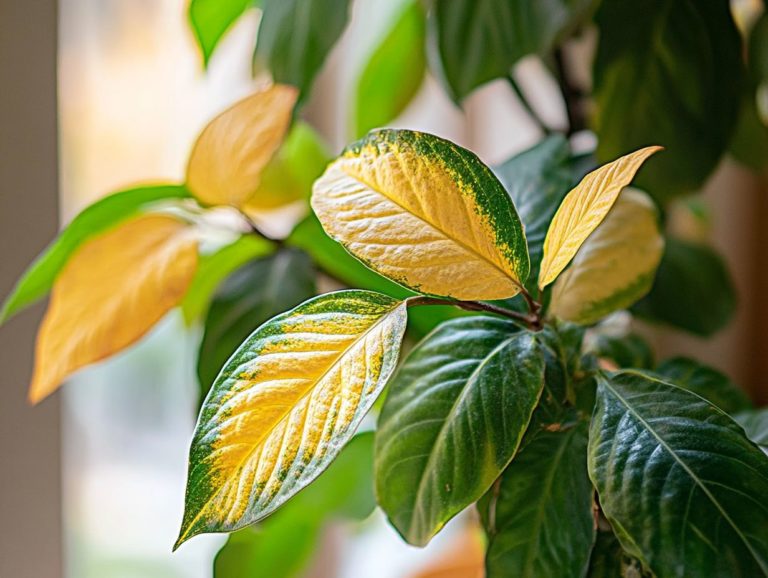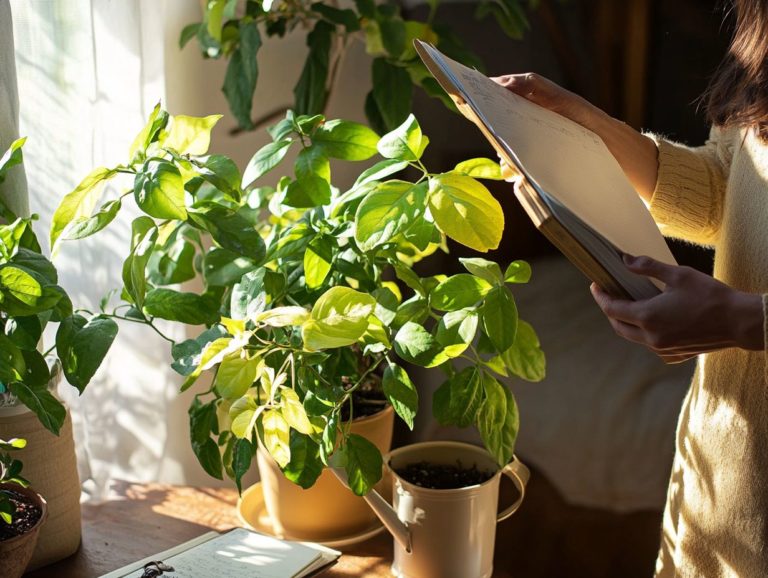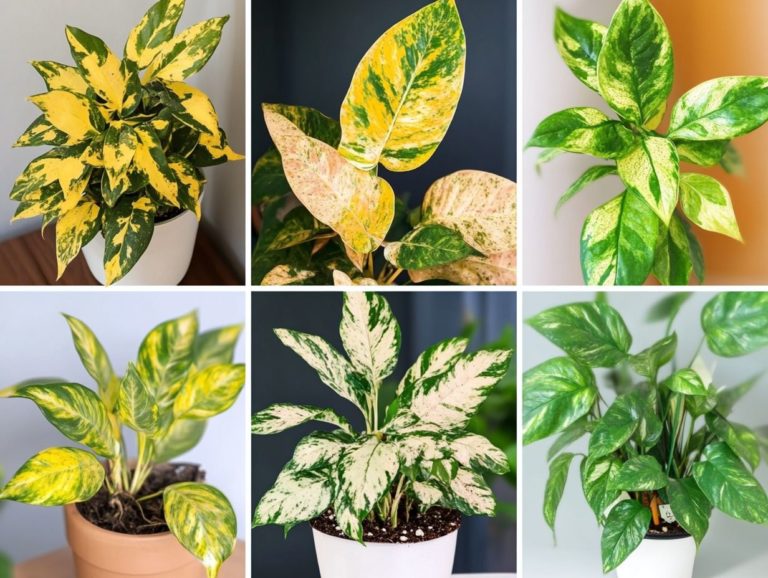Signs Your Indoor Plant Needs More Light
Indoor plants have the remarkable ability to infuse life and vibrancy into any space. Understanding their light needs is essential for ensuring they flourish, especially regarding their growth rate and overall health.
This article explores the factors influencing indoor plants’ light needs. It will help you identify signs of insufficient light, such as leggy growth and small leaves, while providing practical tips for adequate exposure.
It also highlights the risks of too much light and offers solutions for low-light environments, such as using grow lights to enhance sunlight exposure.
Unlock the secrets to thriving indoor plants and become a proud plant parent!
Contents
- Key Takeaways:
- Understanding Light Requirements for Indoor Plants
- Signs of Insufficient Light
- How to Provide Adequate Light for Indoor Plants
- Potential Risks of Too Much Light
- Alternative Solutions for Low Light Environments
- Frequently Asked Questions
- What are the signs that my indoor plant needs more light?
- How can I tell if my indoor plant is getting enough light?
- Can indoor plants survive without natural light?
- What type of light is best for indoor plants?
- What should I do if my indoor plant is not getting enough light?
- Can too much light harm indoor plants?
Key Takeaways:
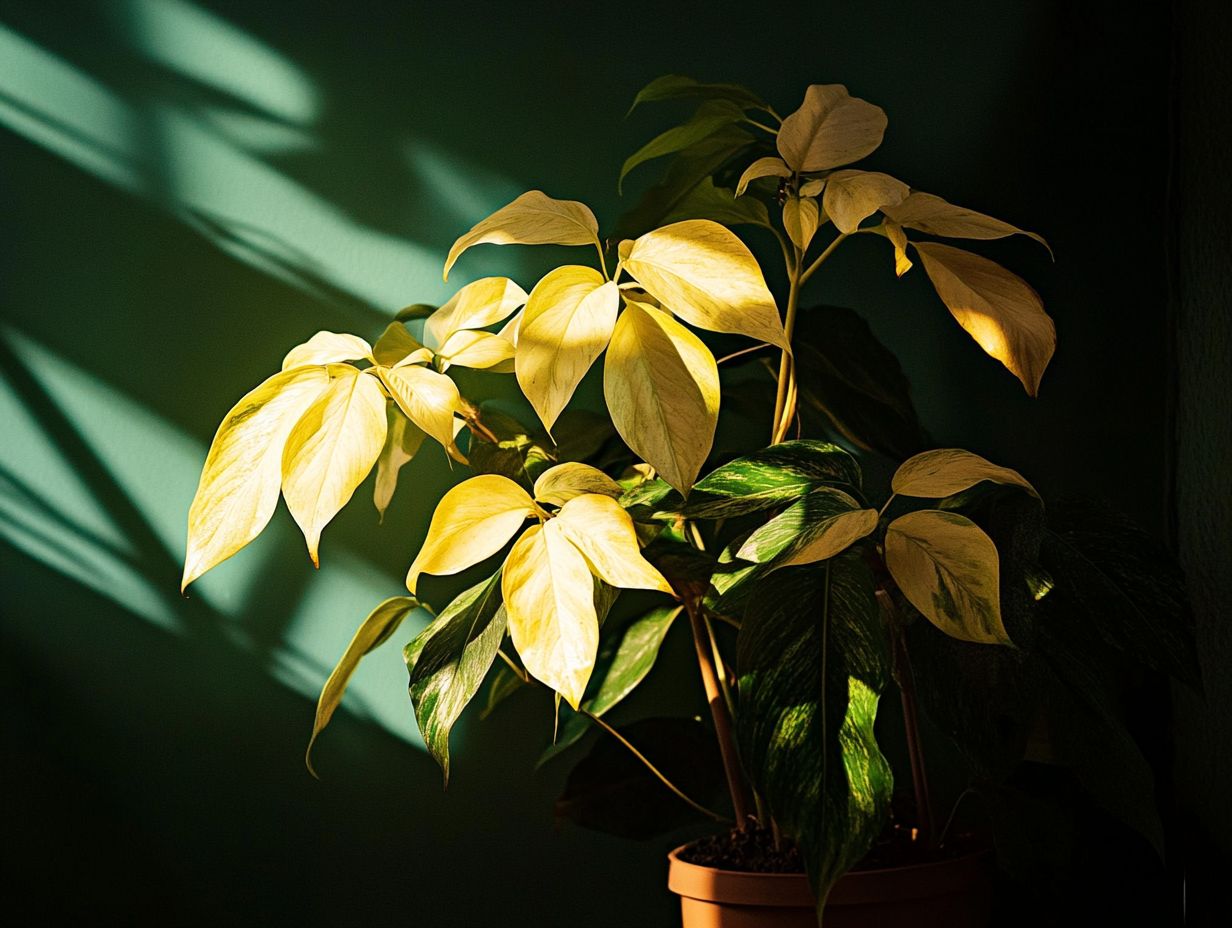
- Plants will show signs of insufficient light, such as yellowing leaves, leggy growth, and browning leaves, indicating they need more light.
- Different plant types, like succulents, cacti, and Begonias, have varying light needs, so it is important to understand the specific requirements for your indoor plants.
- If your indoor space has low light, there are alternative plant options that can thrive in these conditions.
Understanding Light Requirements for Indoor Plants
Understanding the light requirements for your indoor plants is essential for successful gardening. Each plant, whether it’s a Philodendron, Monstera, or Ficus, has specific light needs.
The quality and quantity of light you provide will directly influence their growth, health, and overall vitality. This impacts processes like photosynthesis and nutrient absorption.
As a dedicated plant parent, you should pay attention to how sunlight hours and angles affect crucial processes like nutrient absorption and energy capture for photosynthesis.
By considering varying light conditions bright light, medium light, and low light you ll be well-equipped to give your cherished greenery the optimal care it deserves.
Factors that Affect Light Needs
Several factors play a pivotal role in determining the light needs of your indoor plants. These include the type of light source, light intensity, and the specific growth rate of each species.
Understanding the difference between natural light streaming through your window and artificial sources like grow lights is essential. This can significantly impact photosynthesis and overall plant health.
Natural light, with its ever-changing intensity throughout the day and across seasons, can create optimal growth conditions when positioned just right.
As you move farther from a window, light intensity diminishes, which could stifle your plants development. Artificial lights offer consistent intensity, but they require careful positioning and timers to replicate natural light cycles.
Employing light testing methods, such as the shadow test, enables you to evaluate light exposure and make adjustments as needed. This ensures your plants flourish in the finest conditions possible while considering their unique light needs.
Signs of Insufficient Light
Recognizing the signs of insufficient light is crucial for ensuring the health of your indoor plants. Symptoms such as leggy growth, diminutive leaves, and browning leaves serve as clear indicators that your plants may not be receiving the light exposure they need to thrive.
Start applying these tips today to give your plants the care they deserve!
Identifying Symptoms in Different Plant Types
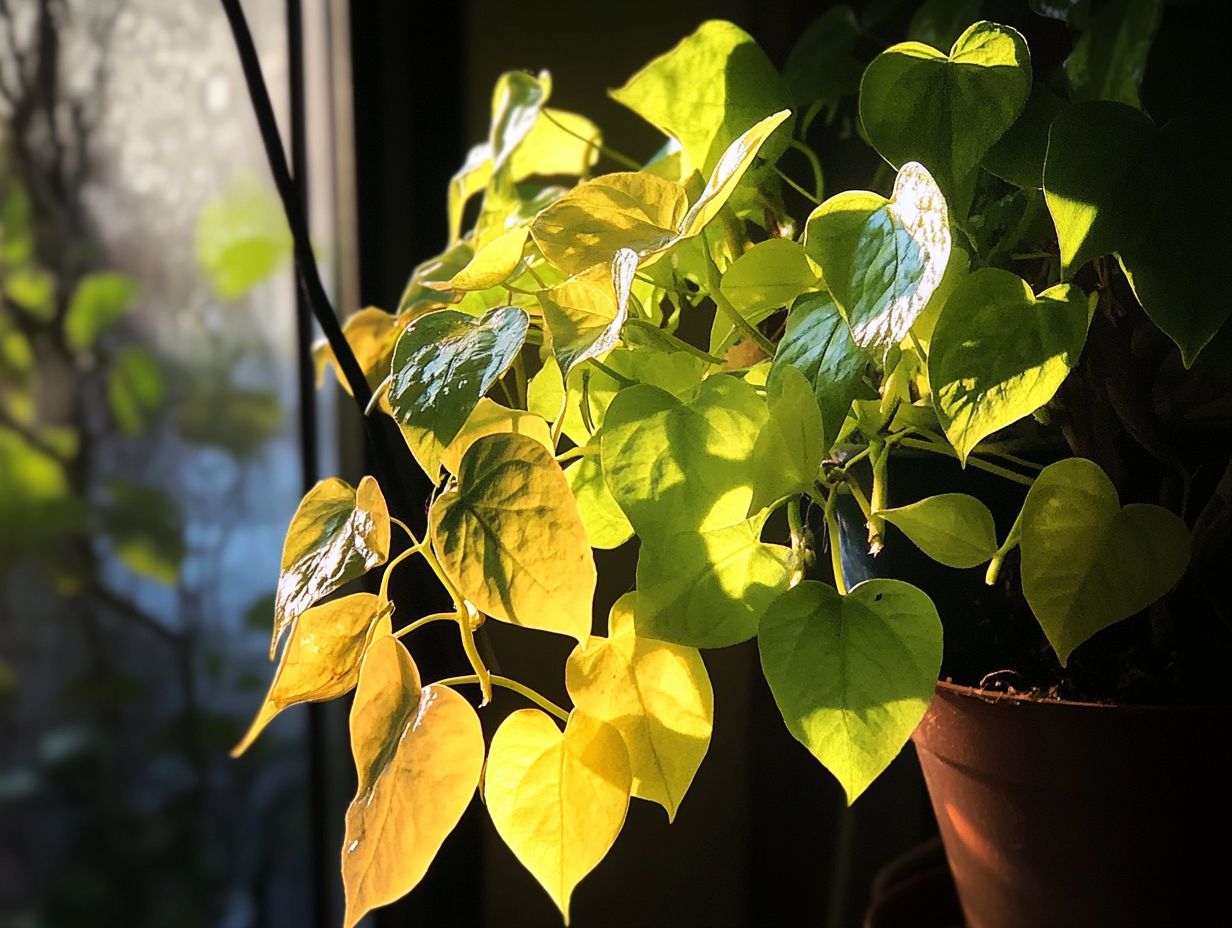
Different indoor plants show unique signs when they lack light. Look for fading leaf color, reduced leaf size, and different colors in leaves as key indicators.
Succulents, for instance, stretch and elongate as they reach for more light. This transformation turns their once compact forms into something more spindly.
Cacti reveal their need for light through discoloration, often taking on a pale or yellowish hue.
Begonias may look droopy, with vibrant leaves losing their charm, which affects their growth.
By paying attention to these signals, you can adjust your care routine. It might be time to move your plants closer to a light source or refer to signs your plant needs more light and use some artificial lights designed to help plants grow indoors.
How to Provide Adequate Light for Indoor Plants
To ensure your indoor plants flourish, it s essential to provide them with sufficient light. This can be accomplished by strategically positioning them near windows, utilizing grow lights, and being mindful of how sunlight changes throughout the day.
Tips for Increasing Light Exposure
You can increase light exposure for your indoor plants using various strategies. Start by adjusting their positioning to capture bright or medium light.
Next, optimize the angles to enhance growth while paying attention to light quality. Assess the unique light requirements of each plant species and how sunlight enters your space at different times of the day.
You can also use reflectors to boost light exposure, redirecting sunlight to fill shadowed areas, especially in darker places.
Regularly rotating your plants ensures that all sides receive even light, promoting a balanced appearance. Be mindful of the changing seasons to maximize the benefits of sunlight, resulting in a healthier and more vibrant indoor garden.
Potential Risks of Too Much Light
While ensuring adequate light is crucial for your plants’ growth, remember that too much exposure can pose risks, especially during periods of intense sunlight.
Overexposure can lead to sunburn and other adverse effects that may compromise the health of your plants, affecting their growth rate and vitality.
Sunburn and Other Negative Effects
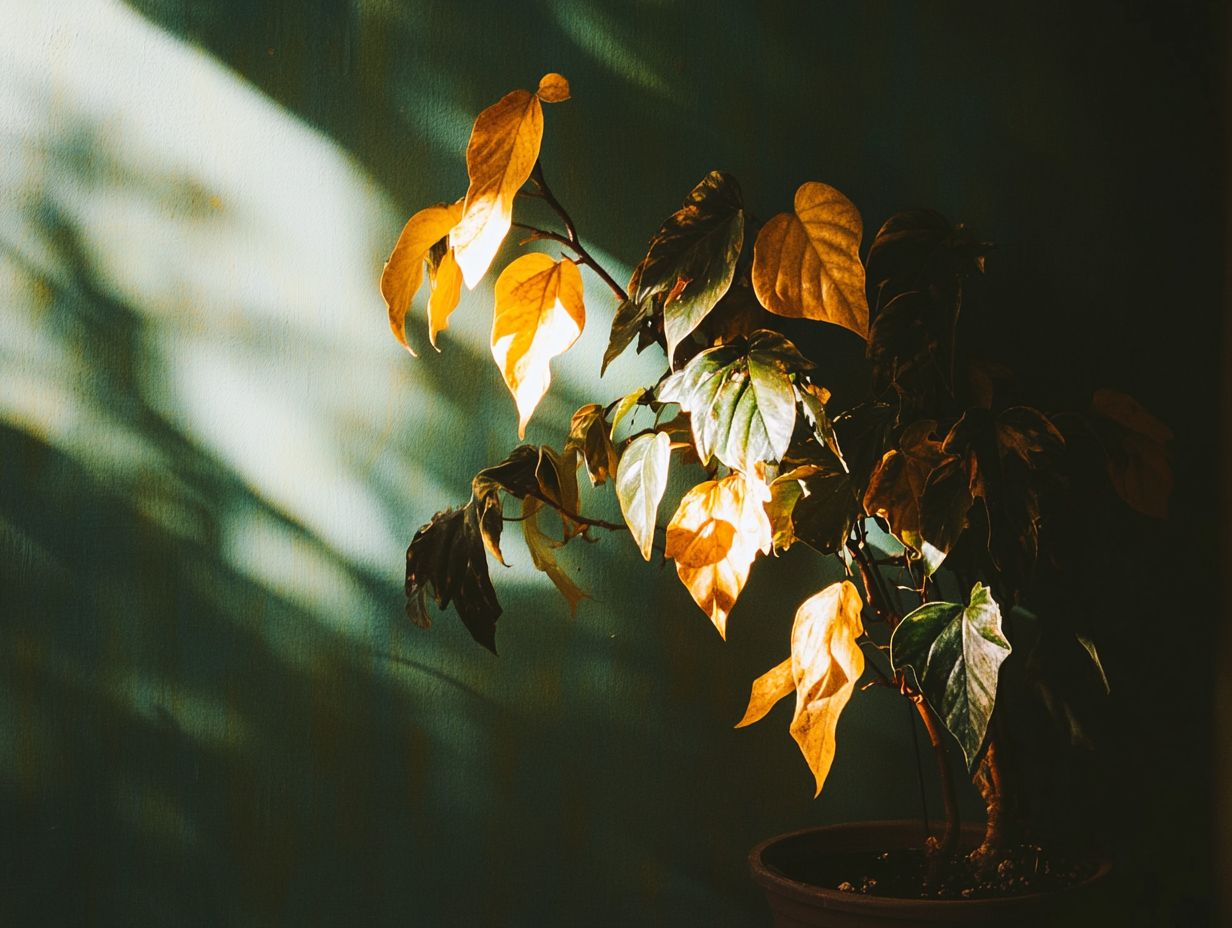
Sunburn is a common dilemma you might encounter with indoor plants that are overexposed to intense light. You ll often notice browning leaves and shifts in leaf color that signal distress, indicating a need for better plant care.
Many sensitive plants, like palms and orchids, struggle with too much light. If your palm gets too much direct sun, its fronds may become scorched, resulting in permanent damage.
Orchids can develop unsightly sunburn spots on their delicate petals, detracting from their beauty and impacting their health.
Don’t let your plants suffer! Strike a balance between light and shadow. Using sheer curtains can help diffuse harmful rays, while regular misting keeps moisture levels in check. To further support your plants, it’s important to understand their specific indoor plant light needs. If your plants show signs of damage, pruning the affected leaves and ensuring they receive adequate hydration can help them recover and thrive once more.
Alternative Solutions for Low Light Environments
For indoor gardening enthusiasts navigating low-light environments, many alternative solutions await. Understanding the unique light needs of various houseplants is key.
You can select plants that naturally thrive in these conditions. Consider incorporating grow lights to boost the available natural light. This ensures your green space flourishes beautifully and stays vibrant.
Plants that Thrive in Low Light
Some indoor plants grow well in low light conditions. They showcase unique growth rates and different leaf patterns, making them suitable for shaded spaces.
For example, succulents like Haworthia and Zebra plants tolerate lower light levels and require minimal watering. This makes them perfect for those who may occasionally forget to tend to their plants.
Varieties of Begonias, such as the Rex Begonia, have adapted to low light by developing striking, patterned leaves that draw the eye. These plants typically prefer indirect light and should be watered when the top inch of soil feels dry to the touch.
By observing their needs and adjusting your care routines, you can create a vibrant indoor oasis in even the dimmest corners of your home.
Frequently Asked Questions
What are the signs that my indoor plant needs more light?
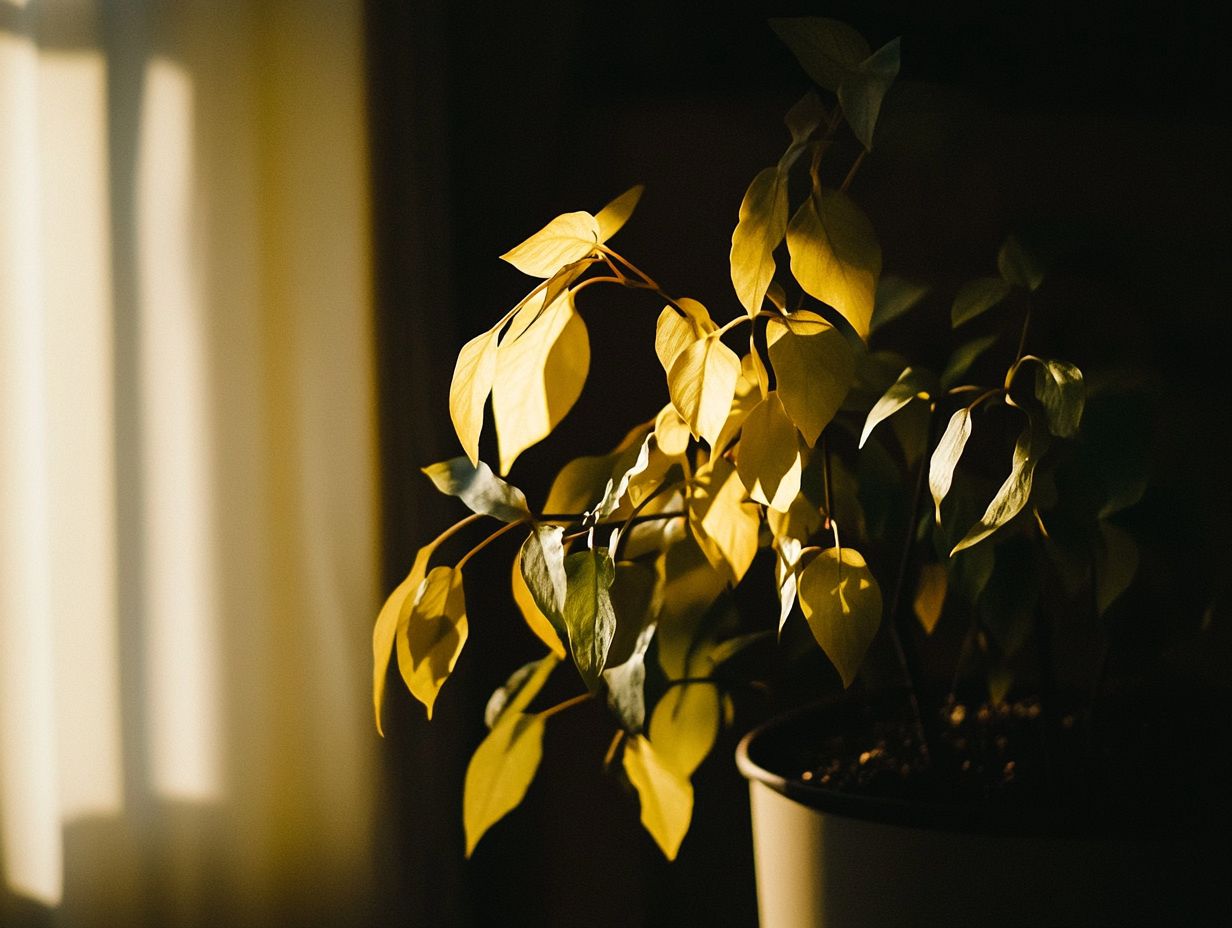
Signs that your indoor plant needs more light include yellowing or wilting leaves, leggy growth, and a lack of new growth.
How can I tell if my indoor plant is getting enough light?
If your indoor plant has vibrant green leaves and is growing and blooming regularly, it is likely getting enough light. Check the plant’s specific light requirements to ensure it’s in the right spot.
Can indoor plants survive without natural light?
Yes! Many indoor plants can survive with artificial light sources like grow lights. These mimic natural sunlight and can provide the light your plants need to thrive.
What type of light is best for indoor plants?
Bright light is typically preferred for most houseplants, while others thrive in medium or low light. Understanding each plant’s specific needs is crucial for successful growth.
Natural sunlight is the best option for indoor plants. If natural light is limited, a combination of cool and warm fluorescent lights works well. LED grow lights are also efficient and effective.
What should I do if my indoor plant is not getting enough light?
If your indoor plant shows signs of insufficient light, move it to a location with more natural light or use artificial light sources. Pruning any leggy growth can also encourage new, compact growth.
Can too much light harm indoor plants?
Yes, too much light can harm indoor plants and even cause them to burn. Research your plant’s specific light requirements to ensure it isn’t receiving direct, intense sunlight for too long.
Explore our range of indoor plants now!

